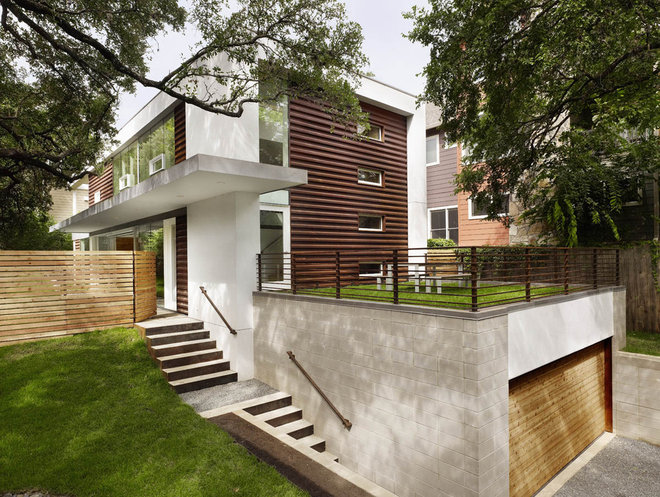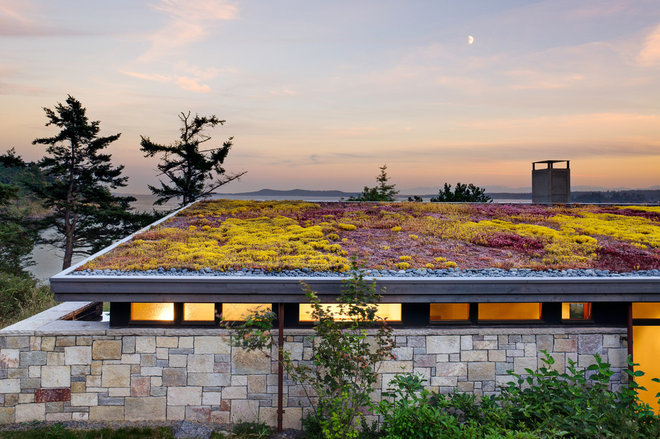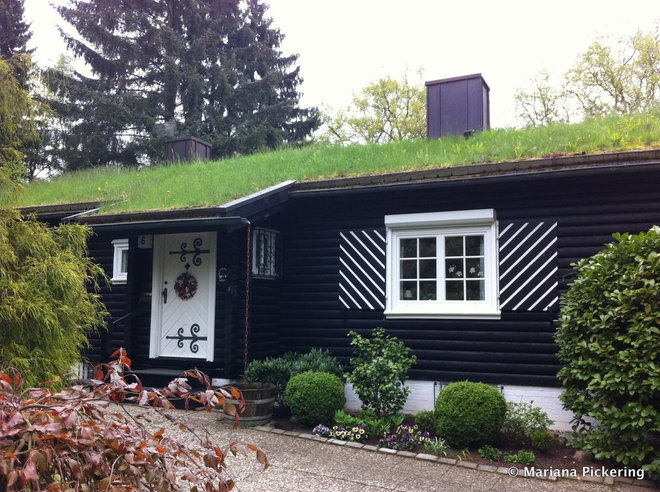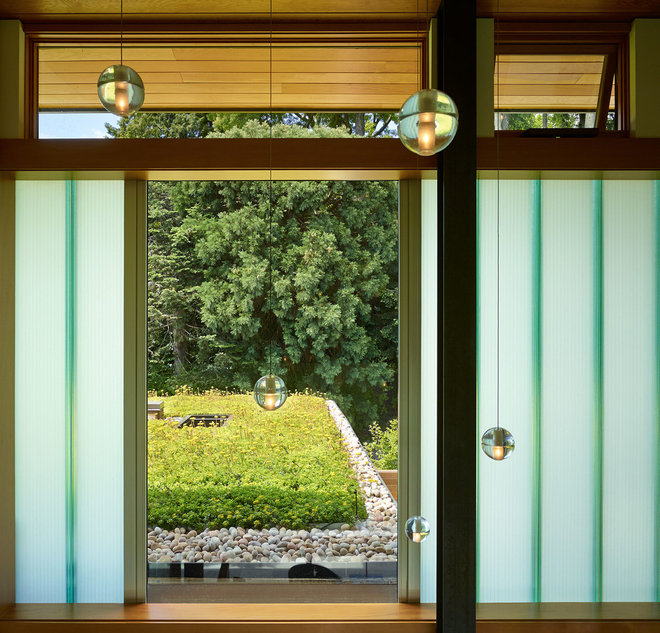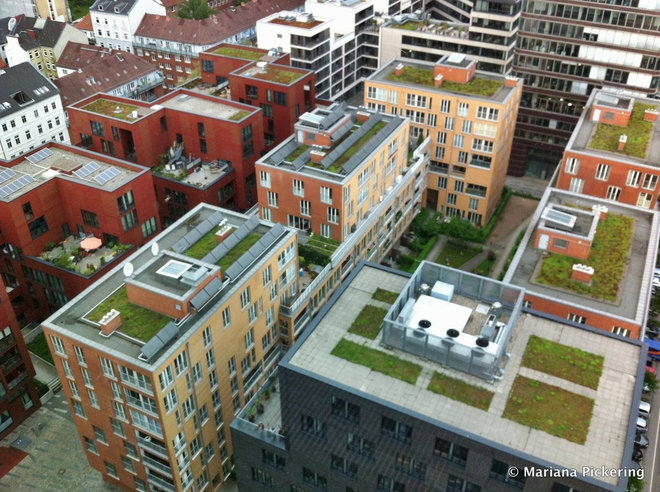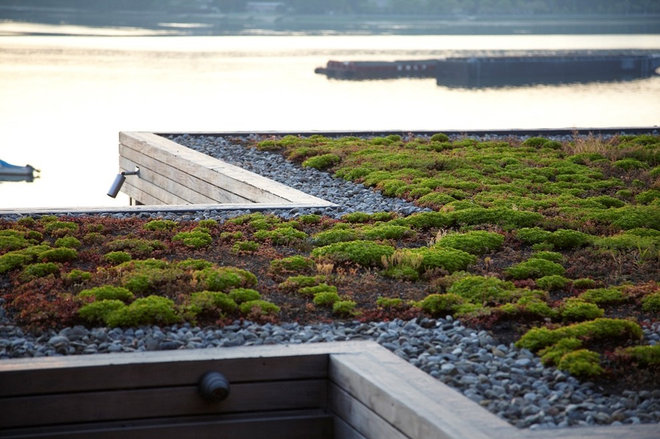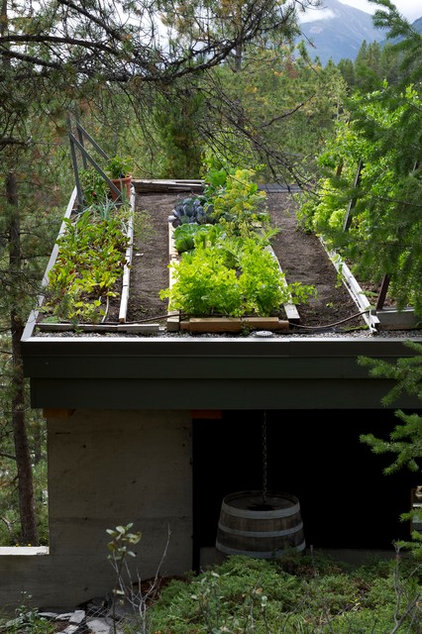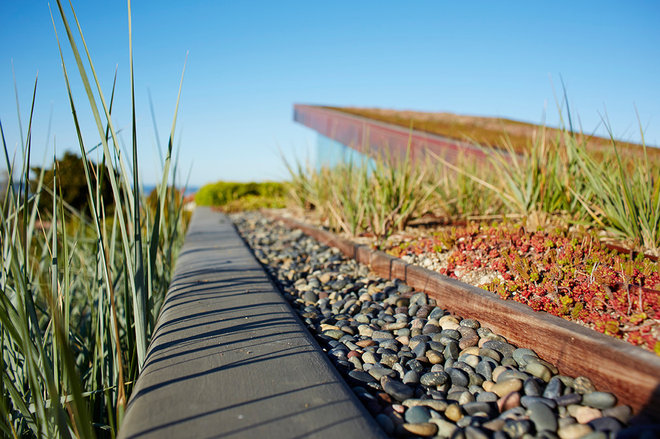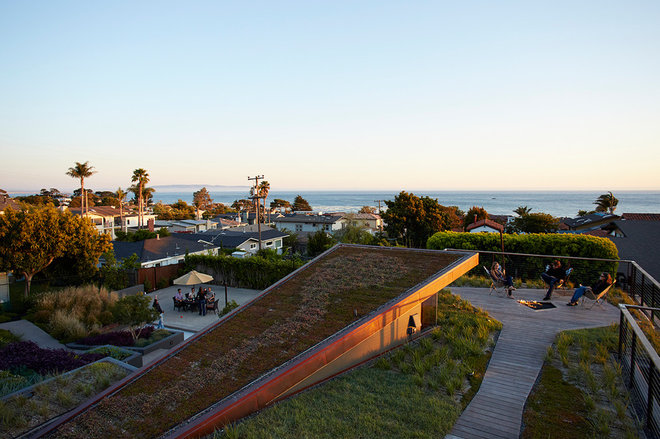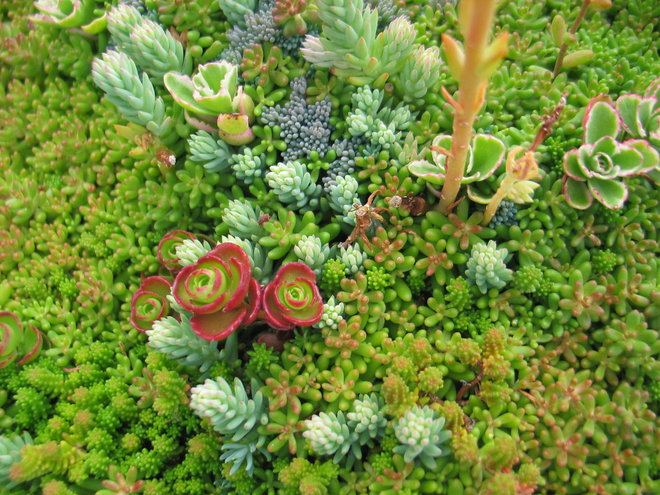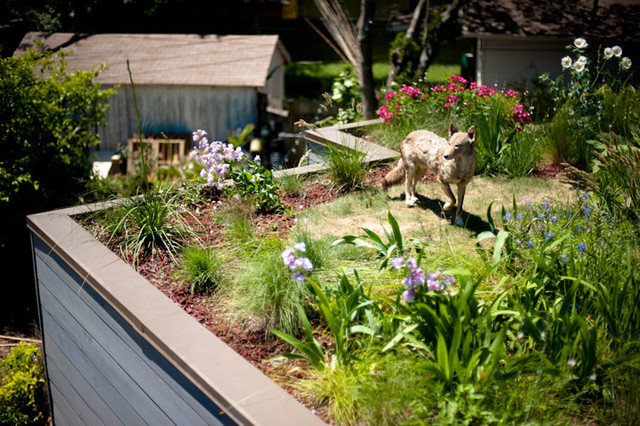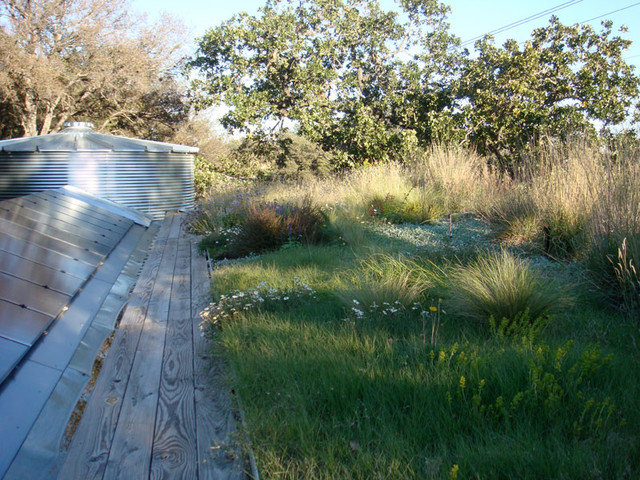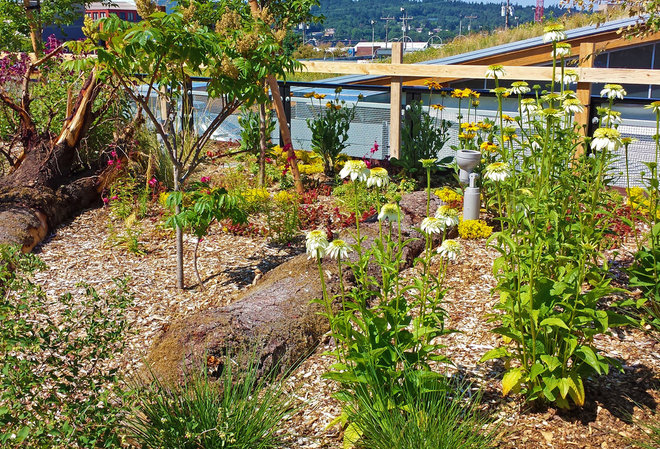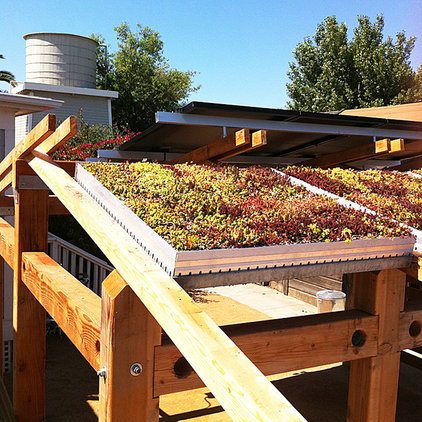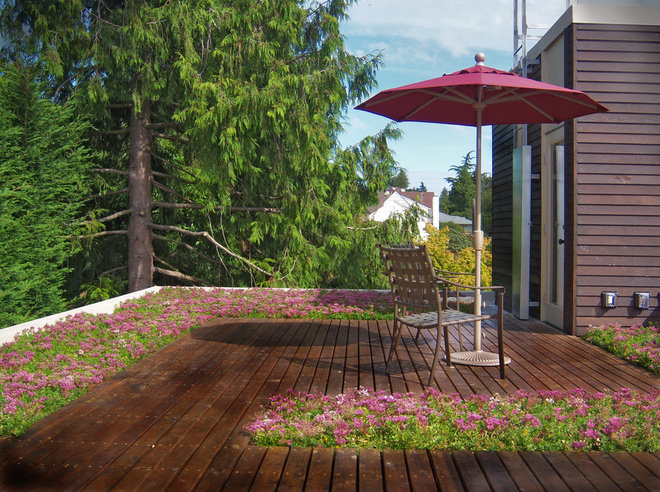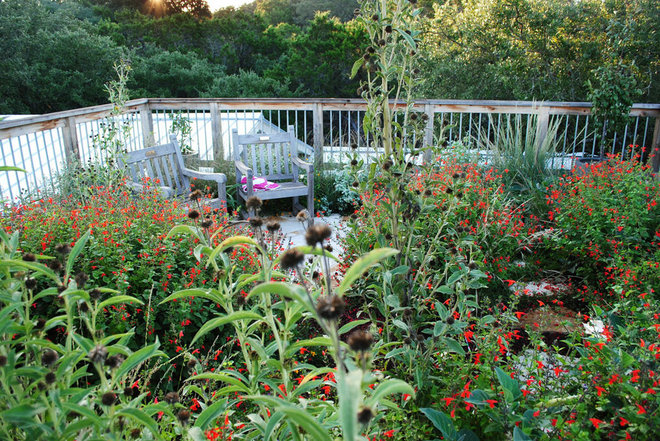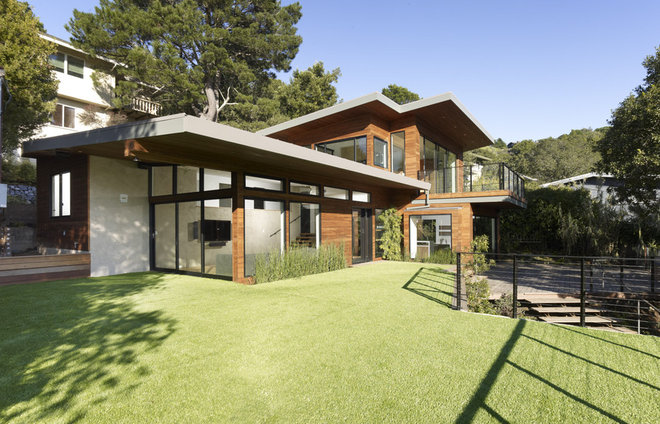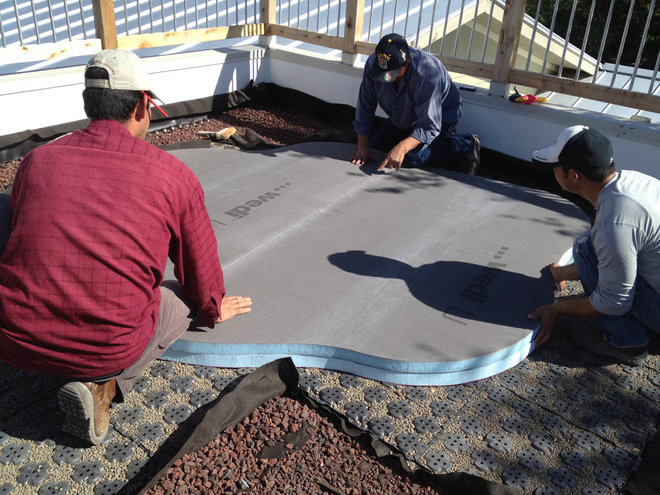6 Green-Roof Myths, Busted
Let's take a look at some common green-roof myths and see if they, er, hold any water.
A green roof is simply one that fosters the growth of vegetation. It is made of a waterproofing layer, a root barrier, a drainage system and growing medium for the plants. "Intensive" green roofs, or roof gardens, can be accessible and can include much larger plants and even water features.
Myth No. 1: Green roofs are a new and experimental part of the green trend.
When do you think the residential green roof in this photo was installed? Five years ago? Ten? Maybe 20? This green roof has been protecting this German residence since the 1940s — more than 70 years ago!
Last May I was able to attend the International Green Roof Association’s conference in Hamburg, Germany. As part of the conference program, we visited the small community of Wohldorf-Ohlstedt. This roof and others like it were constructed in 1943 in one of three Norwegian settlements. The neighborhood was intended to be a social housing option for the needy, including former concentration camp prisoners. It later became a middle-class suburb, with the green-roofed houses becoming quite sought after but rarely available.
Green roofs have been around for centuries. It’s the execution of them that has become more technical of late, allowing for thinner and lighter roof profiles.
Certainly there are many green building certifications that award points for the installation of a green roof. The environmental benefits are undeniable. However, even homes that don't have a specific eco objective can benefit from the aesthetic and economical aspects of having an extended garden space.
The advantages of storm-water mitigation have been noticed by the city of Portland, which now runs the Portland Ecoroof Program, providing incentives to developers who design vegetated roof systems.
This is perhaps one of the most cited concerns of clients. Let me be clear: A leaky roof is independent of whether it's a green roof or a traditional roof. It has to do with the installation and design specification of the structure. All roofs must have a proper waterproofing membrane, green roofs included.
This homeowner elected to have his vegetable garden on the roof (perhaps to keep it safe from hungry animals).
For retrofitted green roofs, you have to be a bit careful. Requirements will depend a lot on what part of the country you live in and what kinds of loads your home was originally designed to sustain (snow, wind, rain etc.).
Many people think that a green roof has to be planted with sedum or other succulents because it's impossible or prohibitively expensive to irrigate a green roof. The reality is that all green roofs require irrigation in the beginning while the roots of the plants are establishing themselves (with the exception of pregrown mats made offsite). The reason that water-storing plants are so popular is because they are beautiful and hardy enough to stand up to the tough conditions of a roof.
However, sometimes combining these with other types of vegetation, such as native grasses, can be a good way to introduce more diversity and increase the aesthetic charm of the roof. Intensive roofs, or roof gardens, are the perfect example of this. Some even have bushes and trees.
She pointed out that when it finally does rain, it rains a lot. Therefore it is not only important to select drought-tolerant plants that can make it through the heat waves, but it's also necessary to design a thicker substrate (growing medium), made of materials that can absorb large amounts of water. The drainage layer may also have deep pockets in it (similar to an egg carton) to store water that will then be released back to the plants during the next heat wave.
"If we begin to think about each site as self-regenerative and consider closed-loop cycles for our water, I assure you we would be further away from the increasing desertification of our landscapes," Boyter says. "Green roofs, living architectural systems, are a tool to increase the quality of our lives as well."
This means that a green roof can act as an extension of the natural landscape on and around the site. The roof then becomes part of a healthy and balanced microecosystem, supporting biodiversity.
"Long-term irrigation of a green roof is no more costly than any other planting area," he says. To offset the costs, the irrigation water can be harvested as rainwater, as is the case for the green roof in this photo.
Stop! Don't do it. A well-designed green roof is made of much more than good potting soil. Often it doesn't even include soil, but instead calls for perlite or other porous lightweight materials.
As I mentioned before, the structure of your home needs to be analyzed to see if it can handle the load of a rain-soaked green roof. The specific climate of your site will need to be considered, and plant selection and drainage systems will need to be designed.
(I personally have not seen these systems used in Europe, and I'm curious to hear what readers have to say about their performance.)
It seems a lot of people are intimidated by green roofs because they don't know where to start or how much it will cost them.
"Choosing the right team of professionals is one way to keep both short-term and long-term costs down," Boyter says. You can start by asking your architect or checking the database of accredited green-roof professionals in your area.
The warranties on the building products used in a green roof are similar to those for all of the other building products in a home. They must be installed according to the manufacturer's specifications by a qualified professional.
According to Boyter, the maintenance plan should be part of the initial design and installation, with a two-year and a five-year plan included, or perhaps an even longer plan in certain circumstances.
The life spans of residential green roofs are still largely undocumented, but some professionals say they can be double the lifespan of a traditional roof. The green roofs of Rockefeller Center in New York City, for example, have the same waterproofing membranes that were installed in the 1930s.
